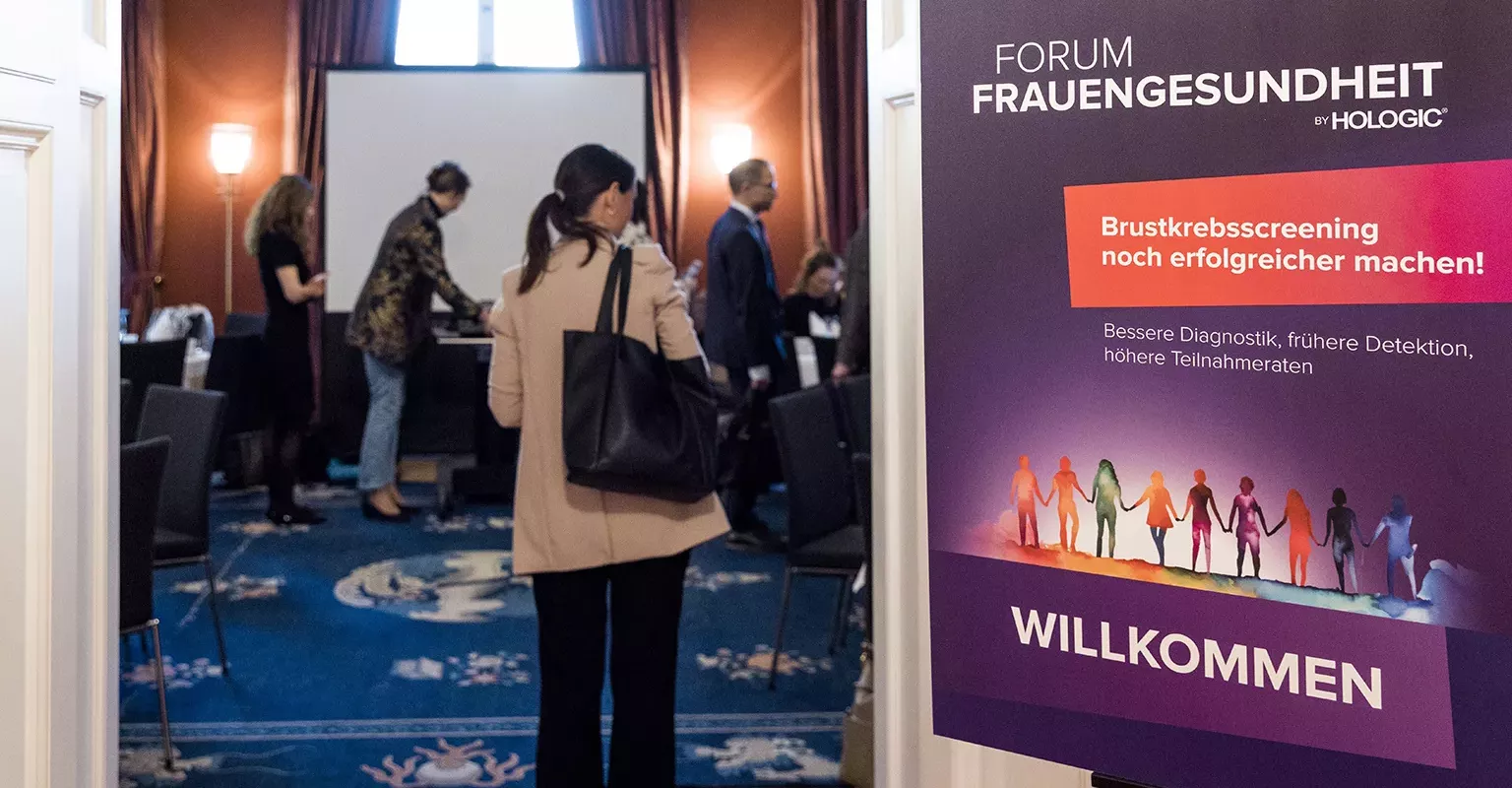Shaping the Future of Breast Cancer Screening with Political Leaders in Berlin

When it comes to breast cancer screening in Germany, the story is one of significant progress with opportunities for further steps forward.
Achievements include the establishment of a national breast cancer screening program and comprehensive direct outreach inviting women to schedule a mammogram. Although the program has made a significant impact on early detection of breast cancer, the participation rate still hovers at 50%. A key way to increase early detection is to broaden the screening-eligible age range from the current 50-69 to an expanded 45-75 years old, giving 2 million more women access to the program. Advocates also want to improve early detection through greater technology, specifically the adoption of 3D Mammography (tomosynthesis) as the national standard for breast cancer screening.
These topics underpinned "Making Breast Cancer Screening Even More Successful," a recent Hologic event hosted at the German Parliamentary Society. The discussion, the first of the Hologic Women’s Health Forum series in Germany, marked an effort to promote dialogue and action on women’s health issues by lawmakers, scientists, healthcare experts and patient organizations.
Hologic DACH General Manager Wouter Peperstraete welcomed the audience and offered opening remarks before introducing women’s health experts who shared their perspectives, including Dr. Katja Siegmann-Luz, head of the Berlin Mammography Reference Centre.
Quote from Dr. Katja Siegmann-Luz
"Mammography screening has been proven to reduce breast cancer mortality. That's why we need to keep working on it."
Dr. Siegmann-Luz provided insight into screening practices and the importance of early detection. She also highlighted the benefits of 3D Mammography, including the improved detection rate compared to 2D mammography alone.
In Germany, women in the eligible age span can receive a no-cost mammogram every two years. The national health system sends them an invitation letter to schedule a mammogram at the designated time.
While this program – which has been built up to its current state over the last 20 years – is a model for effective communication to remind women to get screened, eligibility and participation both can be improved. Neighboring Austria begins screening eligibility at age 45 and France extends the window to age 74. In the European Union, some member countries start screening at age 40. (See a comparative analysis of national breast screening guidelines in Europe.) In Germany, expanded eligibility for women aged 70-75 will take effect later this year, while a decision on whether to include coverage for the 45-50 age range is expected next year.
Peperstraete takes pride in the work done so far, by Hologic and many others, to build up the breast cancer screening program in Germany. "It’s very promising that the process is ongoing for expanding the mammogram eligibility screening ages for German women. I hope we see action taken in the near term to match the broader age range eligibility as some of our EU peers, which will undoubtedly save lives when coupled with proactive steps to encourage greater participation among German women."
Peperstraete also highlighted the outlook for increasing the quality of mammography in Germany. The 2022 TOSYMA trial, a German study that showed tomosynthesis is superior compared to 2D mammography, is an important component. "It is time to act on the results of the TOSYMA trial and bring breast cancer screening forward. … This event was one example of how we can bring together subject matter experts in tomosynthesis and government decision-makers to show the importance and benefits of making 3D Mammography the standard screening methodology."

